The ‘Spirit of Apollo’ Inspires a New Generation of Ukrainian Spaceflight Pioneers
Nolan Peterson /
DNIPRO, Ukraine—Viktor Listov was a 10th grade student in St. Petersburg (then known as Leningrad), Russia, when Soviet cosmonaut Yuri Gagarin became the first man in space, completing one orbit of the Earth on April 12, 1961, aboard his Vostok 1 spacecraft.
Listov vividly remembers the day. His teacher interrupted the day’s lesson and told the students the good news. Then, class was canceled and the students were let loose to celebrate—an unprecedented break from the Soviet school system’s typically rigid discipline.
“It was the proudest moment of our existence, it was intensely great,” Listov, now 74, says during an interview from his office at Ukraine’s National Aerospace Educational Center for Youth, located in the city of Dnipro.

Gagarin’s orbital flight electrified the Soviet Union. Along with other historic spaceflight achievements like the Sputnik satellite launch in 1957, the Soviet space program was an indelible source of pride for Soviet citizens in the decades following the apocalyptic toll of World War II.
“Gagarin’s flight was proof that our communist ideology was working—that we could do something beneficial for all mankind,” Listov says.
In 1969, eight years after Gagarin’s historic flight, Listov began his career in the Soviet space program. As an engineer at the Yuzhmash rocket factory in Dnipro, he worked on the R-36 “Satan,” an intercontinental ballistic missile built to strike the U.S. with nuclear weapons.
Listov was only on the job for a few months when, on July 20, 1969, Apollo 11 landed on the moon and Neil Armstrong took humanity’s most famous first step.
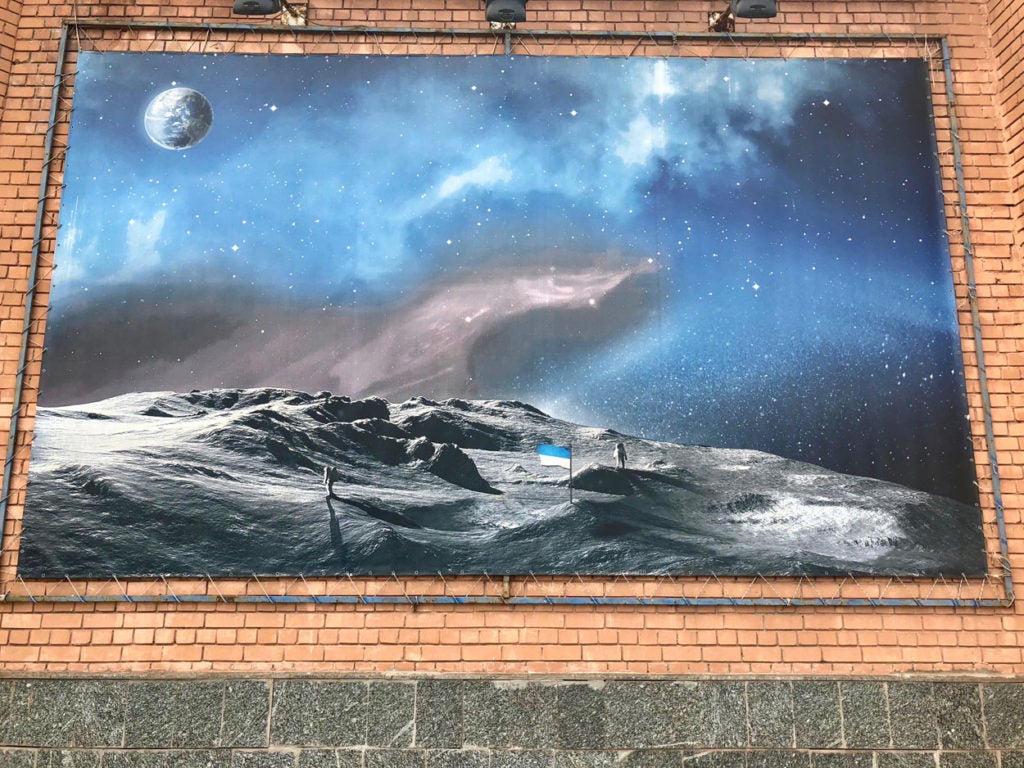
The so-called space race between the U.S. and the Soviet Union ended that day on the Sea of Tranquility. For his part, Listov remembers that news with complicated emotions.
“Of course we were disappointed,” he says. “We were competitive with America. But we were also proud that mankind was able to land on the moon.”
“We had our own moon program. Unfortunately, we weren’t able to create anything comparable to what Wernher von Braun built for America,” Listov adds, referring to the chief architect of the U.S. Saturn V moon rocket. “The best engines and the best rockets ever built were made by Wernher von Braun in the 1960s.”
The ‘Fairy Tale’
Veterans of Ukraine’s Soviet-legacy space program retain a sense of admiration for what America’s Apollo moon program was able to accomplish in so little time, and with relatively primitive spaceflight technology compared with what currently exists.
“I just don’t understand how America did it,” says Alexsandr Bobrov, a 26-year veteran of Yuzhmash, Ukraine’s national spacecraft manufacturing firm.
“The Apollo program was really incredible,” Bobrov says.
Fifty years after Apollo 11’s historic flight, Ukrainian spaceflight innovators are now looking to harness the “spirit of Apollo” to spark a renaissance of their country’s Soviet-legacy space program.
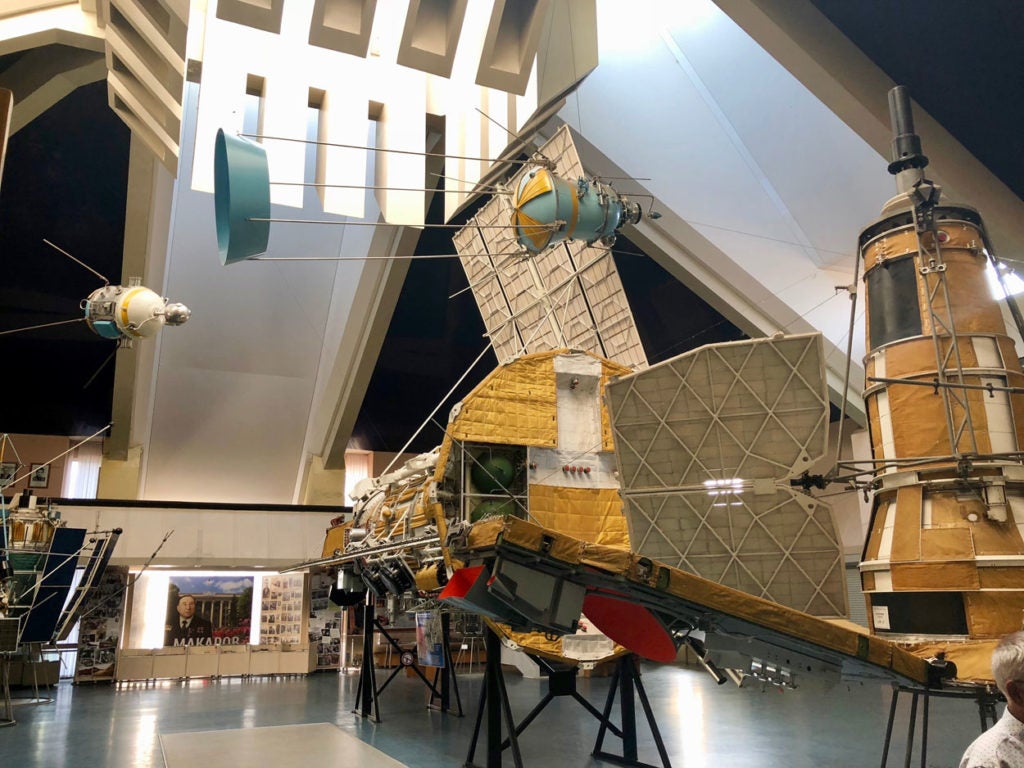
“We have the spirit of Apollo—and we’ll do even better,” says Bobrov, who is now the technical director at a research and development center in Dnipro for Firefly Aerospace, an American commercial spaceflight company.
The financial meltdown of Ukraine’s national space program has dissuaded many young people from pursuing aerospace careers. Thus, as Ukraine’s older spaceflight specialists approach retirement, some worry that Ukraine’s unique heritage of spaceflight knowledge—honed during the Cold War space race—could be lost.
“We’re afraid that world civilization might lose Yuzhmash’s heritage of knowledge,” says Sergei Lizhnik, a 37-year veteran of Yuzhmash who is now chief technical director of Firefly’s research and development facility in Dnipro.
“I want to transfer my knowledge to the younger generations,” Lizhnik says.
Grayed and bespectacled, Lizhnik can’t stop smiling as he talks about Firefly’s rocket program. On the floor of the Dnipro research and development facility, he proudly shows off gleaming rocket components, recently made by a 3D printer.
“Ever since he started working here, Sergei radiates happiness like a rising sun,” Bobrov says of his colleague.
“I’m very busy and very happy,” Lizhnik declares.
Ukraine’s space program veterans are eager to pass on the torch of their country’s Soviet-era spaceflight know-how to a new generation of up-and-coming Ukrainian trailblazers in the commercial space industry.
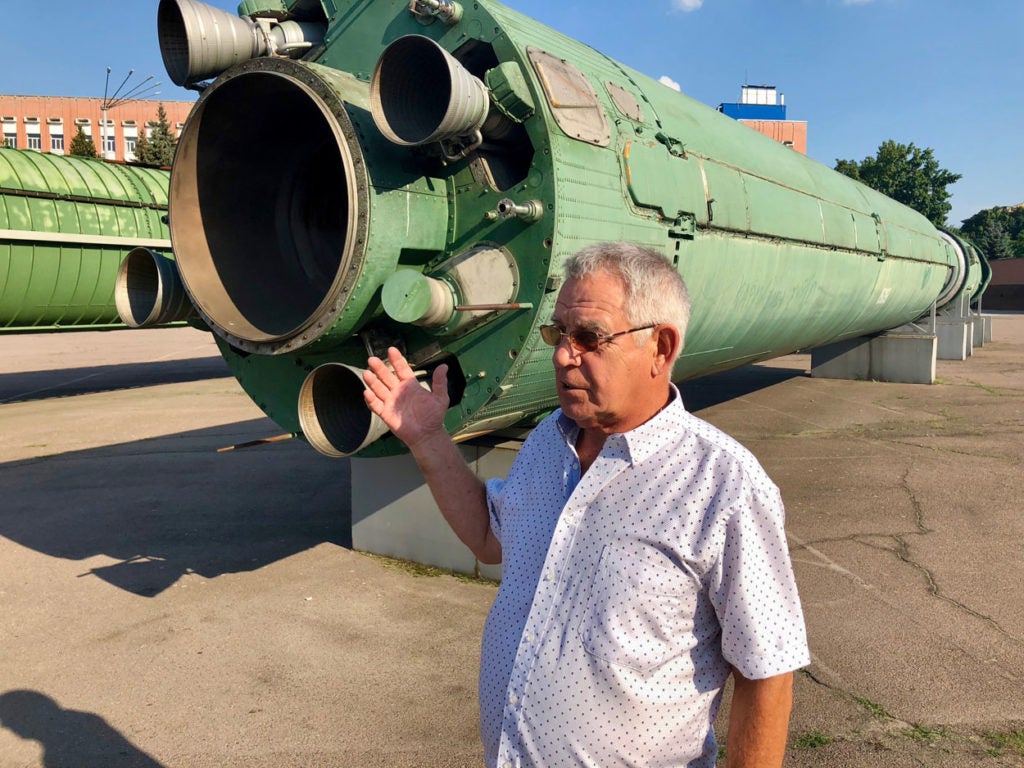
That new generation, in turn, will have the chance to revitalize Ukraine’s status as a space nation through cutting-edge commercial ventures like Firefly. To succeed, however, they’ll need to display the same kind of audacious, unbridled desire to innovate that led to the Apollo program’s success, Bobrov and Lizhnik say.
“We want to compete with Elon Musk,” Lizhnik says. “When America goes back to the moon, we want to be a part of it.”
“We were born to make the fairy tale come true,” Bobrov adds with a sly grin, referencing a line from a famous Soviet song, “March of the Aviators.” The expression became a well-known propaganda slogan promoting the Soviet space program in the 1960s.
“The Soviet Union was full of false promises,” he says. “Now we can really do it.”
‘Heritage’
Headquartered in Cedar Park, Texas, and headed by Ukrainian venture capitalist Max Polyakov, Firefly opened the Dnipro facility last year to leverage Ukraine’s Soviet space heritage to usher in a new era of more affordable commercial spaceflight ventures.
“That Soviet knowledge can disappear in five or 10 years,” Polyakov says during an interview with The Daily Signal at Firefly’s Dnipro offices. “We have to save the knowledge. Knowledge is more important than anything on a balance sheet.”
Polyakov’s father worked in the Soviet space program. So, after he made a fortune in the information technology business, Polyakov says his family’s space “heritage” spurred him to venture into the commercial space industry.
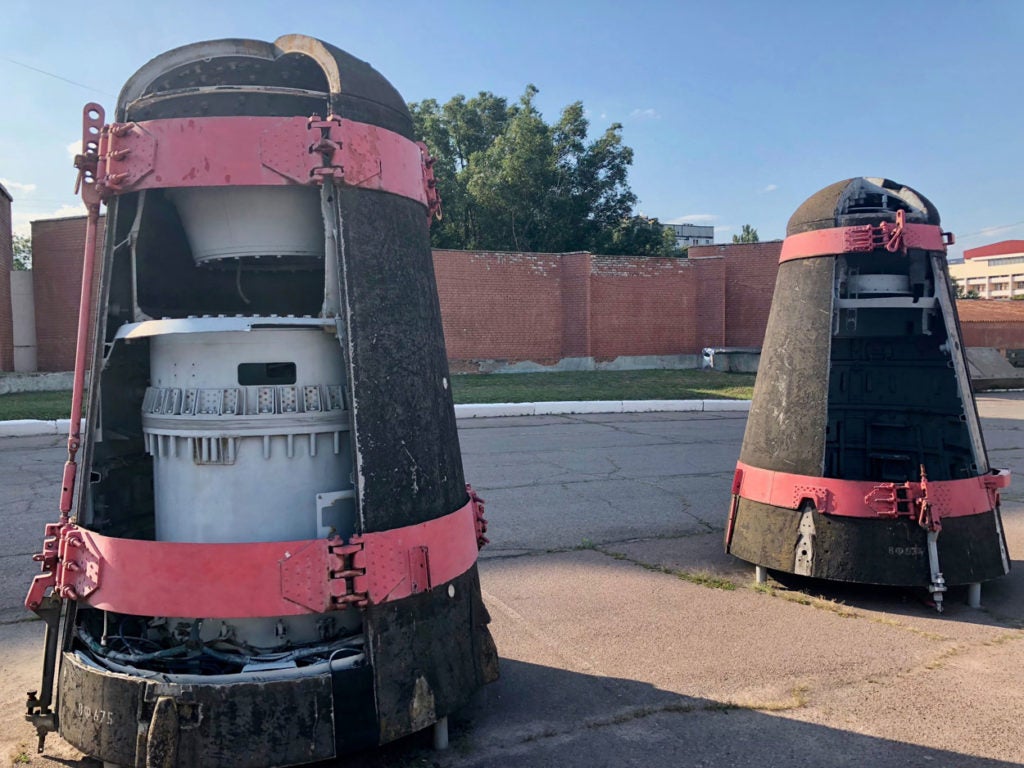
Polyakov bought Firefly in 2017. Since then, he’s rapidly revamped the company, quickly turning it into a prospective leader in affordable satellite launches.
Firefly’s approach is to cut costs in production with innovative manufacturing techniques and the use of affordable composite materials. The company is also focused on building smaller rockets that will launch the scaled-down satellites that comprise orbital “constellations.”
Last year, Firefly purchased a launch site at the U.S. Air Force’s Vandenberg Air Force Base in California. In 2019, as part of a $52 million expansion, the American spaceflight company also acquired a launch site at Cape Canaveral, Florida.
After a key engine test went successfully in April, the company plans on launching its Alpha rocket for the first time in December.
At the Dnipro facility, Firefly’s Ukrainian innovators are developing a 3D printing assembly line to mass produce rocket components—the use of 3D printers cuts the manufacturing time of some parts down from over a year to 13 days in some cases, workers say.
Firefly’s rockets are built in the U.S., and the company’s Ukrainian branch—Firefly Ukraine—is a U.S.-owned company. However, Polyakov describes Firefly’s model as a “third way between the U.S. and the former Soviet Union.”
Apart from making Firefly a commercial success, Polyakov says he wants to “give something back” to his native country.
“We are working hard to inspire the next generation of Ukrainian spaceflight innovators,” Polyakov says. “We lost a generation of space engineers after the Soviet Union collapsed.”
‘Closed City’
Situated on the west bank of the Dnieper River in central Ukraine, Dnipro is an industrial city of about 1 million people. Roughly 40% of the Soviet Union’s space industry was located here during the Cold War.
At the national rocket design and manufacturing companies—known as Yuzhnoye and Yuzhmash, respectively—Soviet engineers once developed and built rockets such as the Satan ICBM. At its height in the Cold War, the Yuzhmash manufacturing facility employed around 5,000 people.

During the Cold War, the military secrets locked away in Dnipro were important enough that the Kremlin designated it a “closed city.” No foreigners were allowed in—even Soviet citizens needed a special permit to visit. Soviet authorities banned workers from having any contact, including mail correspondence, with foreigners.
Today, massive antenna arrays remain standing around the city, the remnants of Soviet electromagnetic jamming stations meant to thwart U.S. signals intelligence collection.
After the Soviet collapse in 1991, Yuzhnoye and Yuzhmash remained open. Yet, the post-Soviet years saw a precipitous decline in Ukraine’s spaceflight industry, which remained reliant on government funding as well as a complicated logistical relationship with the Russian Federation. Key items like aluminum and specialized alloys had to imported.
The situation hit rock bottom after Russia’s 2014 seizure of Crimea and subsequent invasion of eastern Ukraine’s Donbas region. Since then, Ukraine and Russia have been locked in a low-intensity, de facto state of war.
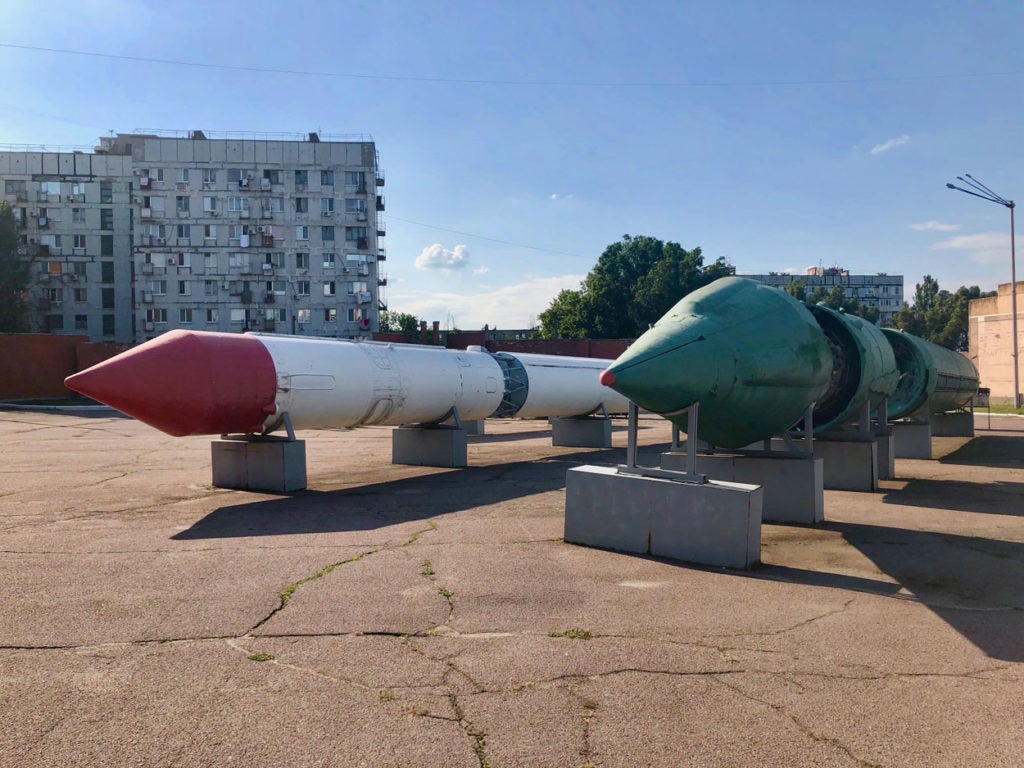
There’s an ongoing trench war in eastern Ukraine along with a political and economic war between the two erstwhile Soviet allies, which has severed many Soviet-era industrial supply chains—like the one upon which Ukraine’s space program once relied.
“It was a disaster,” says Listov, the former Yuzhmash spacecraft designer, describing the war’s impact on Ukraine’s national space industry. He adds that Yuzhmash is currently in its “worst financial situation ever.”
The average age of workers at Yuzhmash is around 60, some current and former employees say. And workers at the government-subsidized facility haven’t been paid in months due to lagging sales.
“There is no hope,” Listov says of the morale at Yuzhmash. “The specialists feel underappreciated, and many of them are looking for new jobs.”
Inspire
Polyakov finances Firefly through Noosphere Ventures, an umbrella organization that provides capital to a broad array of high-tech startups and community outreach programs.
Among Noosphere’s ventures is a spaceflight startup called Space Electric Thruster Systems, or SETS, which designs electro-propulsion space thrusters.
Viktor Serbin, the 32-year-old CEO of SETS, wasn’t born when Apollo 11 landed on the moon in 1969. Even so, Serbin says the legacy of the Apollo moon landings, as well as Armstrong’s immortal words as he first stepped onto the lunar surface, sparked his boyhood imagination, spurring him to ultimately pursue a career in space technology.
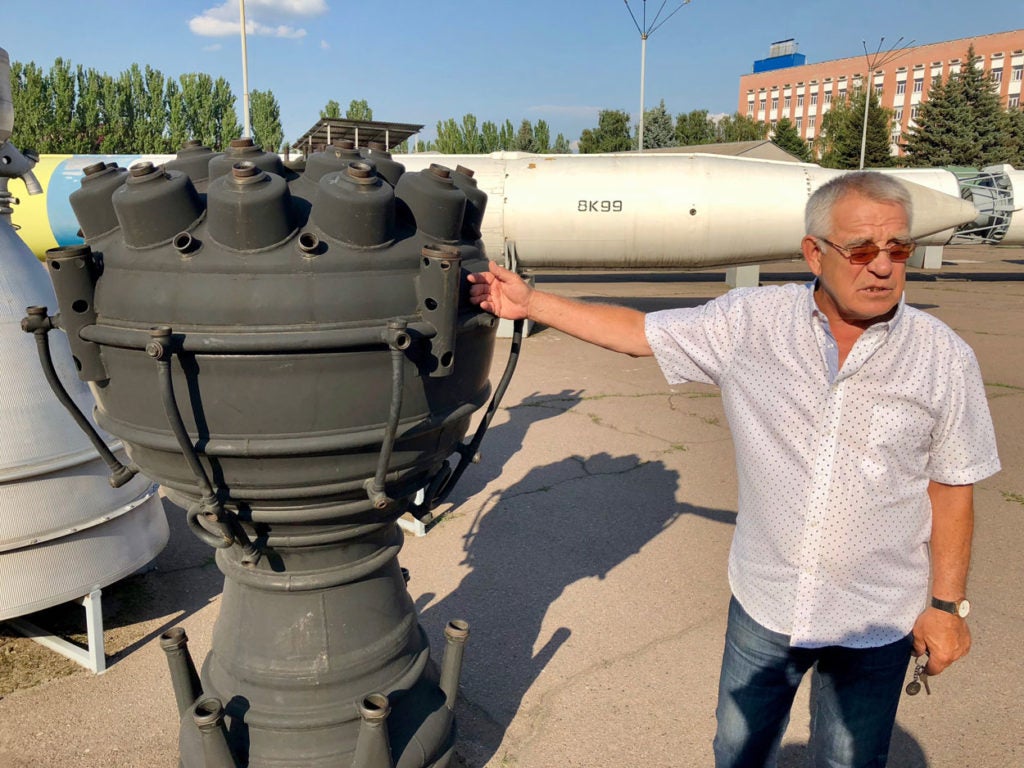
“I read about the lunar program as a child—it was inspiring, very inspiring,” Serbin says during an interview at his headquarters in Dnipro. “I remember Armstrong’s words, ‘For all mankind.’ It made me believe that nothing was impossible. Today, at SETS, we have the same innovative spirit that the Apollo program had.”
According to Serbin, SETS is in negotiations to sell its first batch of thrusters sometime in the next few years. Even though things happen slowly in the spaceflight business, he says he’s confident that his company will be successful in the long run.
“Too many people in Ukraine believe that we can’t do these things,” Serbin says. “But if we are successful, and if Firefly is successful, we’ll be an inspiration for our young people.”
The Next Generation
Firefly Aerospace is one of the nine companies selected by NASA to participate in the Commercial Lunar Payload Services program to deliver science payloads to the surface of the moon. Firefly’s design, called Genesis, is based on the Israeli Beresheet lunar lander.
“Our goal is to unite Israeli, Ukrainian, and American technology,” Polyakov says. “And we’ll build the lander in Texas.”

According to company statements, Firefly has already purchased the intellectual property rights to the Israeli design. When developed, the plan is to launch Genesis to the moon on Firefly’s Beta rocket, which remains under development.
Looking to the future, Polyakov wants to use the Soviet Union’s manned lunar lander concept (which was never flown) to build another unmanned lunar lander for NASA.
“We have the expertise,” Polyakov says.
Despite his ambitious goals, Polyakov has an altogether sober long-term vision for his company. Ultimately, he wants to do something “good for humanity”—while also making a profit.
According to Polyakov, national security concerns spurred the massive, government-funded American and Soviet space programs during the Cold War. Now, he says, we’ve entered a new era of commercial spaceflight in which bottom lines will inspire mankind’s next “giant leap.”
“There have to be practical benefits to space exploration,” Polyakov says. “There have to be economic incentives for going back to the moon.”
Fiscal discipline is the defining difference between government-run and commercial spaceflight programs, Polyakov says, adding that in Ukraine he’s “demonstrated that it’s possible to build rockets without the government involved.”
‘Little Steps’
Through Noosphere, Polyakov has also funded a range of educational programs in Ukraine, spanning the gamut from rocketry to robotics. When asked why he’s invested so much money in Ukraine, Polyakov, without missing a beat, replies, “A passion to retain knowledge and do something good for the country.”
And there’s another, practical spin-off from his investments in Ukraine’s intellectual capital.
“Our plan is to create a pool of talent that Firefly can use,” Polyakov says.
True to Polyakov’s vision, Noosphere funds a hands-on rocketry workshop for students at Oles Honchara Dnipro National University.
On the eve of the 50th anniversary of the Apollo 11 moon landing, a group of 15 university students—ranging in age from 18 to 21—present their work to this correspondent.
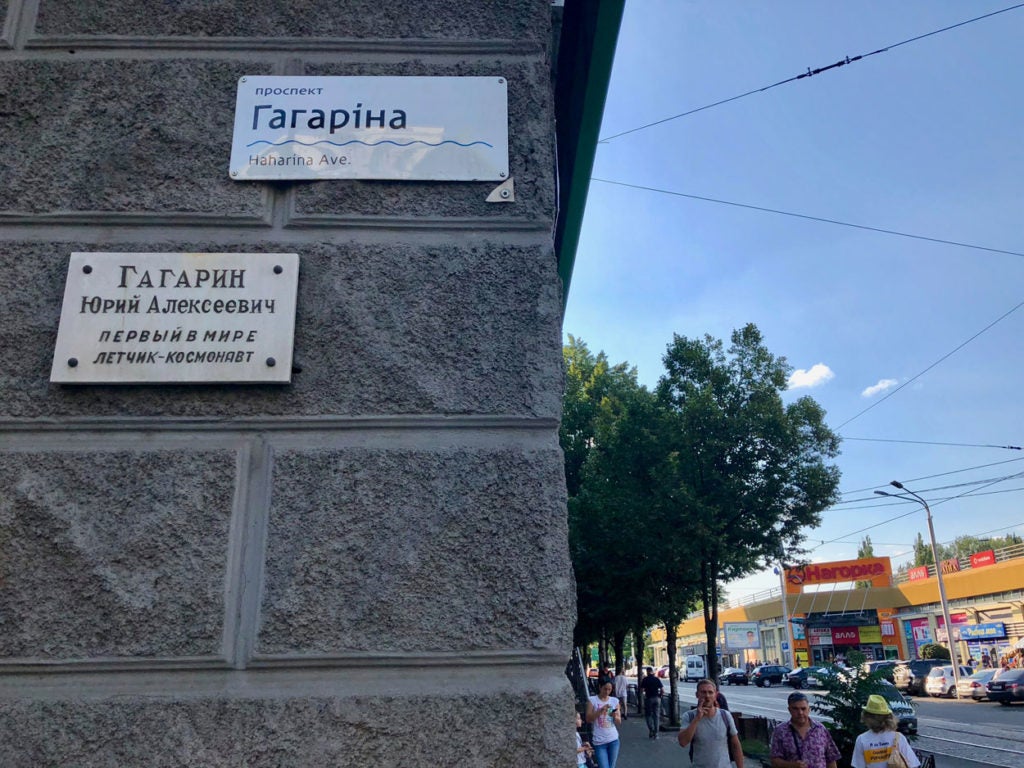
The students speak in surprisingly fluent English—even while explaining a litany of specific, technical terms. The rocket they’ve built can fly nearly a mile high, although they have plans for other rockets that can go much higher; ultimately, they say, to the edge of space.
“It’s like the Apollo program—little steps,” says Kostya Koryachko, 20, one of the rocketry program’s students. He adds, “Our mission is knowledge.”
Their rocket is painted red and is about 4 feet long. The bottom half comprises the engine, which is only good for one launch. The top half, however, is reusable. It sports an integrated camera and a deployable “sputnik,” or satellite, which is about the size of a soda can. As it falls back to the earth, slowed by a drogue banner, the satellite records a bevy environmental data, which a ground team can later download and analyze.
“This is my passion, this is what I’ve always wanted to do,” says 18-year-old Vitalii Mishchenko, who handles the satellite’s software programming. “It’s important to be around like-minded people. When you’re around people who inspire you, you always want to inspire yourself, too.”
Noosphere’s rocketry program does not count toward university credit hours. Yet, the students—who include two women—are confident that their participation is a valuable way to shore up their resumes.
“Noosphere is a great start for us,” Koryachko says. “In university you can only learn about these things. But here we have a chance to learn hands-on.”
The students are well aware of the troubles facing Ukraine’s state-run space industry. However, they’re still dead set on pursuing careers in spaceflight. Due to educational opportunities afforded by Noosphere, the students say they’re hopeful about landing jobs at commercial spaceflight ventures, such as Firefly, SETS, or SpaceX.
Some say they want to work for NASA.
“Because Max Polyakov invested in programs like ours, the younger generation understands they have other options than Yuzhnoye and Yuzhmash to continue their careers,” says Serbin, the CEO of SETS.
‘It Was Worth It’
Looking back on his career, Listov beams with pride. He’s also a touch nostalgic about a bygone era. “We worked very hard and our lives were very stressful,” he says, “but I miss the pride I felt to be a part of something so amazing.”
By the time he retired from Yuzhmash in 2015, Listov was distressed by the downfall of Ukraine’s Soviet-legacy space program. He says the war with Russia was a “disaster” for Yuzhmash, which left Ukraine trying to compete with its erstwhile Soviet ally for global spaceflight contracts.
“We were partners with Russia, and now we’re enemies,” Listov says. “It’s crazy.”
He adds that without a significant national economic turnaround, Ukraine may not be able to maintain its status as a so-called space nation.
“The economic situation is holding back Ukraine’s aerospace industry,” Listov says. “Unfortunately, talented kids are not enough. We need a good, stable economy.”
Today, Listov gives guided tours of the National Aerospace Education Center of Youth’s collection of Ukrainian-made satellites and rockets.
For this correspondent, the museum’s highlights include a Soviet “Satan” ICBM, as well as a V-2 rocket engine (designed by von Braun, the German rocket scientist who would become America’s moon rocket guru), which was seized by Soviet troops during the invasion of Nazi Germany in World War II.
These days, Listov says he relishes the enthusiasm and wide-eyed wonder of children when they encounter these technological marvels.
“The children give me nothing but positive emotions,” Listov says. “I’m happy here.”
Worthwhile
Ukraine’s vaunted role in the Soviet space program remains a rare chapter of the country’s communist past that it would rather remember—and proudly.
Ukraine’s 2015 so-called decommunization laws banned all vestiges of the Soviet Union. All remaining statues of Vladimir Lenin have since come down. The display of the Soviet hammer and sickle flag and the playing of the Soviet national anthem are now prohibited. The city of Dnipropetrovsk was renamed as “Dnipro”—the excised “petrovsk” referring to a Soviet luminary.
Nevertheless, Dnipro’s Yuri Gagarin Park and Yuri Gagarin Avenue retain their original names. As does a street named after Soviet cosmonaut Gherman Titov, the second person to orbit the Earth.
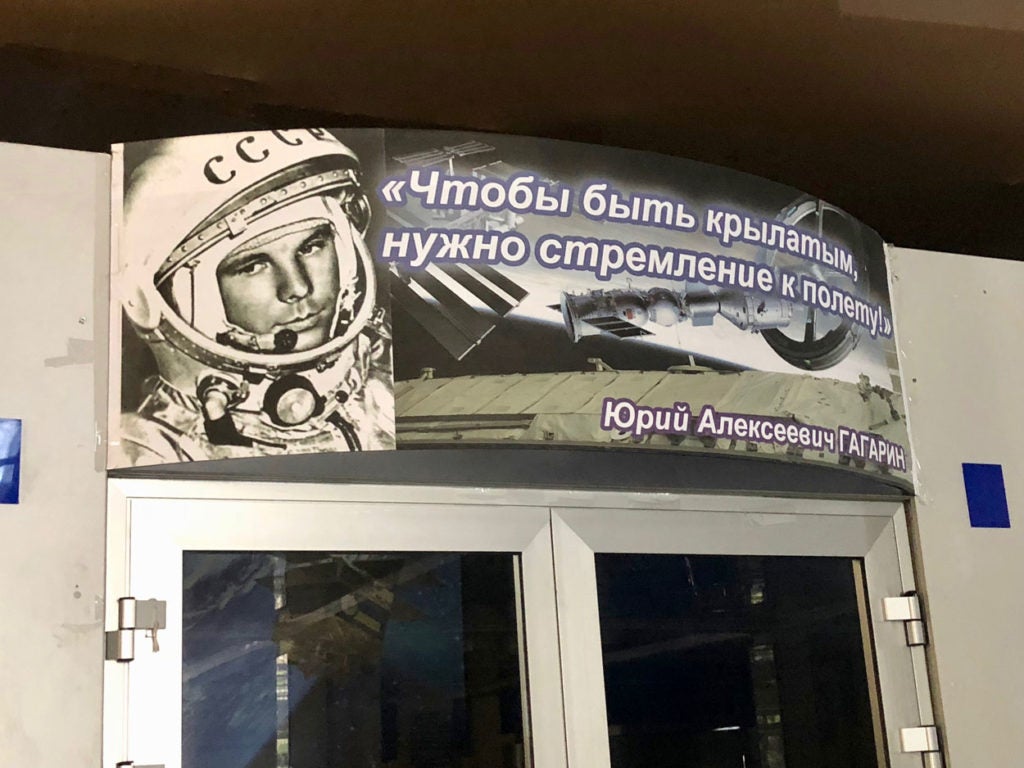
At the National Aerospace Education Center of Youth, where Listov now works as a specialist, a collage of children’s paintings includes a likeness of Yuri Gagarin. The acronym “C.C.C.P.”—Russian for USSR—is painted on the brow of his helmet.
Inside the museum’s entrance hall, a large photograph of Gagarin in his spacesuit adorns a wall. Beside the picture is a quote attributed to the Soviet cosmonaut. It reads: “To have wings, all you need is the desire to fly.”
“We did amazing things,” Listov says of the Soviet space program. “We were America’s equals in space. We worked our entire lives to achieve this, and it was worth it.”
